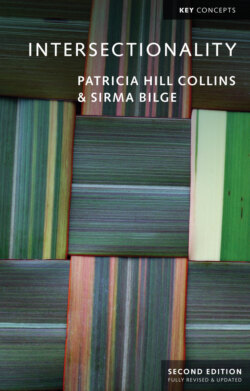Читать книгу Intersectionality - Patricia Hill Collins - Страница 8
1 What Is Intersectionality?
ОглавлениеIn the early twenty-first century, the term “intersectionality” has been widely taken up by scholars, policy advocates, practitioners, and activists in many places and locations. College students and faculty in interdisciplinary fields such as women’s studies, ethnic studies, cultural studies, American studies, and media studies, as well as those within sociology, political science, and history and other traditional disciplines, encounter intersectionality in courses, books, and scholarly articles. Human rights activists and government officials have also made intersectionality part of ongoing global public policy discussions. Grassroots organizers look to varying dimensions of intersectionality to inform their work on reproductive justice, antiviolence initiatives, workers’ rights, and similar social issues. Bloggers use digital and social media to influence public opinion. Teachers, social workers, high-school students, parents, university support staff, and school personnel have taken up the ideas of intersectionality with an eye toward transforming schools of all sorts. Across these different venues, people increasingly claim and use the term “intersectionality” for their diverse intellectual and political projects.
If we were to ask them, “What is intersectionality?” we would get varied and sometimes contradictory answers. Most, however, would probably accept the following general description:
Intersectionality investigates how intersecting power relations influence social relations across diverse societies as well as individual experiences in everyday life. As an analytic tool, intersectionality views categories of race, class, gender, sexuality, class, nation, ability, ethnicity, and age – among others – as interrelated and mutually shaping one another. Intersectionality is a way of understanding and explaining complexity in the world, in people, and in human experiences.
This working definition describes intersectionality’s core insight: namely, that in a given society at a given time, power relations of race, class, and gender, for example, are not discrete and mutually exclusive entities, but rather build on each other and work together; and that, while often invisible, these intersecting power relations affect all aspects of the social world.
We begin this book by recognizing the tremendous heterogeneity that currently characterizes how people understand and use intersectionality. Despite debates about the meaning of this term, or even whether it is the right term to use at all, intersectionality is the term that has stuck. It is the term that is increasingly used by stakeholders who put their understandings of intersectionality to a variety of uses. Despite these differences, this broad description points toward a general consensus about how people understand intersectionality.
